#jan 1997
Text




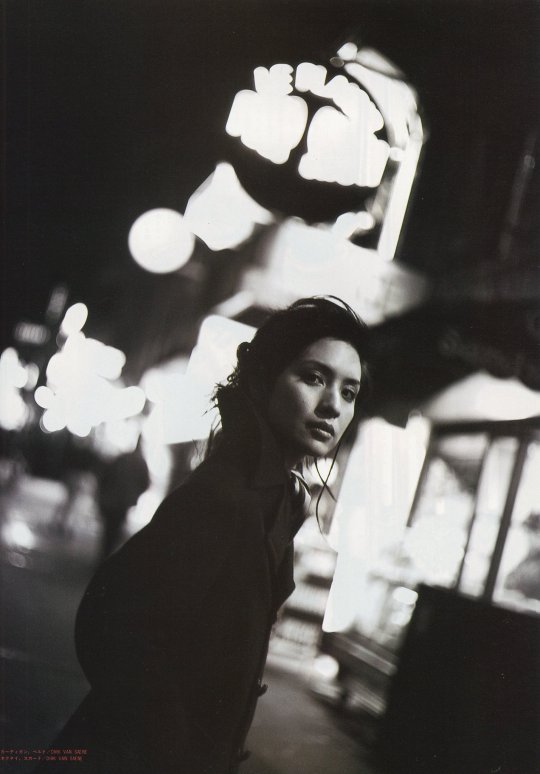

kahimi karie, january 1997 h magazine via ken29716939
15 notes
·
View notes
Text
The Artist Formerly Known as Prince // Ebony // Jan 1997





"Emancipation is defined as freedom from restraint, control or power of another, freedom from bondage. For The Artist Formerly Known As Prince, emancipation is freedom, and much, much more... "
from the Jan 1997 issue of Ebony // article by Lynn Norment
#prince#the artist formerly known as prince#the artist#prince 1997#1997#ebony#ebony magazine#jan 1997#prince home#prince house#r&b#pop 1997#1990s pop#90s pop#1990s#90s#1990s music#90s music#1990s singers#prince rogers nelson#minnesota#lynn norment#paisley park#paisley park studios
9 notes
·
View notes
Text


der sohn der komissarin, jan ruzicka 1997
#daniel brühl#polizeiruf 110#der sohn der komissarin#jan ruzicka#1997#katrin saß#ulrich matthes#christine schorn#benno fürmann#herbert feuerstein#jenny deimling#inglorious basterds#good by lenin!#obst & gemüse oder der kunde ist könig#about photography#netto
18 notes
·
View notes
Text

Tour de France 1997
20 notes
·
View notes
Text
Reprise Vol. 1 - Master & Slave
I think it's no big secret that Paul doesn't have much good to say about Kiss' Carnival of Souls. To put it mildly. Or he simply does everything imaginable to at least create such impressions whenever this album title should rarely enough become the subject of an interview question. Of course, he's welcome to do as he pleases, but personally, from my humble perspective, I think it's a bit of a shame, because I can also remember times when he spoke a tiny bit differently about it.
For example, I can still remember the time when the subject of a reunion was still treated as fictitious, and it wasn't on anyone's horizon, least of all Paul's and Gene's. That was back in 1994/95, when Kiss' laudable motto of perseverance and giving their best was for a change increasingly emphasized in their new music.
And I still remember very well that regular little Kiss feature in the German Rock Hard magazine, which was supervised by their Kiss Die-Hard (0), and from whom one got the vivid impression that he regularly got a certain insight into the world of our favorite band. I think it must have been February or March 1995 when Paul and Gene (1), but also Eric Singer (2), apparently got in touch with the interviewer directly from the rehearsal room in a telephone interview and Paul confidently said, not without his usual side-swipe at Gene, that his songs were much more melodious and heavier than Gene's. There was a certain pride in that. At some point later he even went so far as to claim that the new album was the best and heaviest since Creatures of the Night. Oh my!
What I mean, since that's a rather thoughtful and equally rare tribute to their own music, which was previously only outspoken to give a very special shine to the indeed excellent Revenge, and the return to form associated with it. And I must add to this Paul seemed quite proud of Revenge in 1992 regardless of how hard he had contributed to the previous albums in the 80's anyway. But who knows, once again, it was probably just the latest sensationalization of the upcoming album (3). Promotion is a double-edged sword, but to wipe Revenge away so succinctly because of it, I really don't know. But maybe and probably because it wouldn't have sounded so good to say their new album was the best since... their last one.
But to get my act together and to at least briefly talk directly about Master & Slave in this context.
So, as I already mentioned in my original entry, Master & Slave had the working title: Paul's Riff. In my perception, this suggests pride and respect, not necessarily from Paul himself, but clearly from his band environment. And the fact that such a meagre, yet all-saying no-name was chosen as accepted as a working title, if not even honored from everybody involved clearly speaks for itself.
And because this is a reprise, I'll simply feature an excerpt from my original text about what I see in this song:
"What begins in Not For the Innocent with a few approaching, ominous tones, continues in Unholy as a small extension in a slightly different pitch, and a much more compact back and forth oscillation of these tones, which thereby does not form the entire riff, but only a complementary part of it. In Master & Slave the whole thing gains in drasticness, and the motif is doubled to a lower pitch, added to the previous one to secure its terrain, only to turn into a Black Sabbath motif a la After All. An endlessly repeating highly dynamic acrobatic feat in loud and quiet/guitar and bass contrast."
When writing Master & Slave, Paul must have thought to himself: Ok Gene, a dark album full of Unholys shall it be? This time I'll listen to you, then you shall get Unholy. Which must have stimulated his ambition to try to outdo Gene in terms of Unholy by more than a small margin. I think the result shows in all strength what the right ambition can achieve.
"To conjure up this wet dream of riff Paul must have really tried hard and done his very best to achieve such a result - regardless of what he claims about Carnival of Souls as a whole today."
It is a real pity that he no longer stands by it. Gene and, above all, Bruce (4) seem to have fewer problems with this.
Side Notes:
(0) Jan Jaedike.
(1) Gene emphasized the psychedelic component and compared Carnival of Souls to the Rolling Stones' Satanic Majesties Request (1967) (5) , and that they couldn't explain either why it sounded different from the previous album.
(2) Eric said the album was super heavy and exactly the kind of music he wanted to play. I love to mention this because he had also clearly distanced himself from Carnival of Souls over the past few years. Klassik!
(3) Can anyone still remember how they loud-mouthedly advertised Crazy Nights as a mixture of Animalize and Destroyer back then? There's even a Youtube video of it, but don't ask me where. Anyway, that was still was something different.
(4) Or the last of the Mohicans, as I like to call him.
(5) Hmm, which Stones album did Ace's cover of 2000 Man actually come from?
Master & Slave starts from the beginning. Unholy and Not For The Innocent are highlighted. Turn up the volume and open your ears, I assume no liability:
Master & Slave (1997)
youtube
Unholy (1992)
youtube
Not For The Innocent (1983)
youtube
I'll add After All by Black Sabbath on top.
After All (1992)
youtube
#Kiss#Paul Stanley#Bruce Kulick#Last of the Mohicans#Curtis Cuomo#Gene Simmons#Vinnie Vincent#Master & Slave#Carnival of Souls#Lick It Up#1997#1992#1983#Revenge#Bob Ezrin#Michael James Jackson#Toby Wright#Rock Hard#Magazine#1994#1995#The Rolling Stones#Satanic Majesties Request#1967#Roland Rockover#Eric Singer#Youtube#Black Sabbath#After All#Jan Jaedike
14 notes
·
View notes
Text


W A T C H I N G
#GOOD BURGER (1997)#GOOD BURGER (2023)#Kenan Thompson#Kel Mitchell#Abe Vigoda#Dan Schneider#Shar Jackson#Jan Schweiterman#Linda Cardellini#Sinbad#Josh Server#Lori Beth Denberg#Alex R. Hibbert#Fabrizio Guido#Emily Hinkler#Elizabeth Hinkler#Anabel Graetz#Leslie Jones#Pete Davidson#Ego Nwodim#Lil Rel Howery#Jillian Bell#Carmen Electra#George Clinton#Danny Tamberelli#WATCHING#comedy#NICKELODEON
1 note
·
View note
Photo
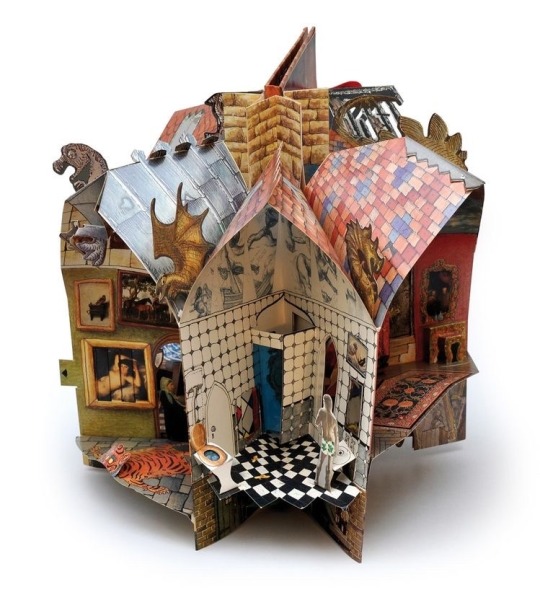
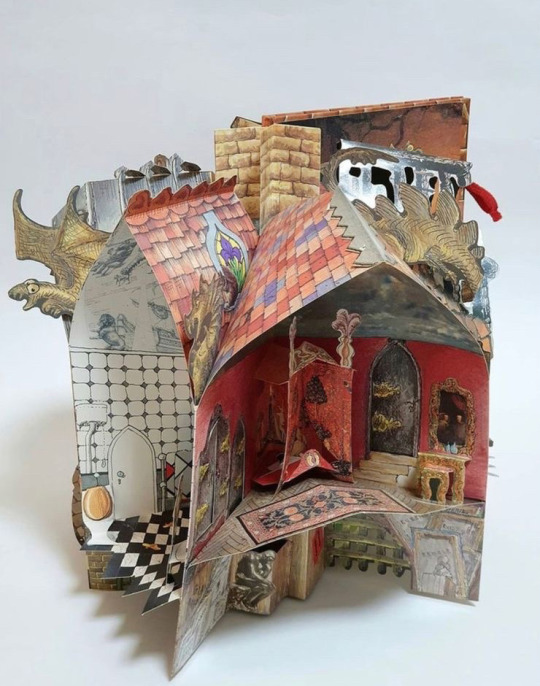
© jan pienkowski - botticelli’s bed & breakfast - 1997
I just realized we can actually buy this here...
18K notes
·
View notes
Text

Happy New Year!
From Adria
The Cypher staff and various friends of ours gathered at Kino's for our yearly bonfire. A pleasant time was had by all. A straightforward New Year's party would be too boring for us; no, we don't go full-on ritual observance, but we have a fairly chill one.
The bonfire is a way for us to express our frustrations about the past year, let go of our griefs, and take faith in our hopes for the future. We burn objects, small personal items if we feel the need, and most often, slips of paper (as decorative as you deem that to be relevant) to convey our wishes to our power of choice.
We had good food, good drink, watched a movie or two, and enjoyed the unusually light midnight sky as well. We even saw a shooting star!
Whatever your New Year's tradition, enjoy the chill of winter, and have a good 1997.
0 notes
Text

FEMME FATALES: V5 #7 [JAN 1997]
#femme fatales magazine#elvira#horror#90s#fashion photography#magazine#cassandra peterson#femme fatale#photography#u
2K notes
·
View notes
Text
ARCHITECTURE OF THE JHELUM WATERFRONT-SRINAGAR: IMAGES AND IMPRESSIONS
ARCHITECTURE OF THE JHELUM WATERFRONT-SRINAGAR: IMAGES AND IMPRESSIONS
By Neerja Tiku
Himalayan and Central Asian Studies, Vol.1, No.1 (Jan-March 1997)
‘who has not heard of the vale of Cashmere,
With its roses the brightest that earth ever gave,
Its temples, and grottos, and fountains as clear,
As the love-lighted eyes that hang over their wave.’
— Lalla Rookh by Thomas Moore
Introduction
Visitors to the valley have vividly described the splendour of the habitat…

View On WordPress
#ARCHITECTURE OF THE JHELUM WATERFRONT-SRINAGAR: IMAGES AND IMPRESSIONS - by NEERJA TIKU Himalayan and Central Asian Studies#No.1 (Jan-March 1997)#Vol.1
0 notes
Text
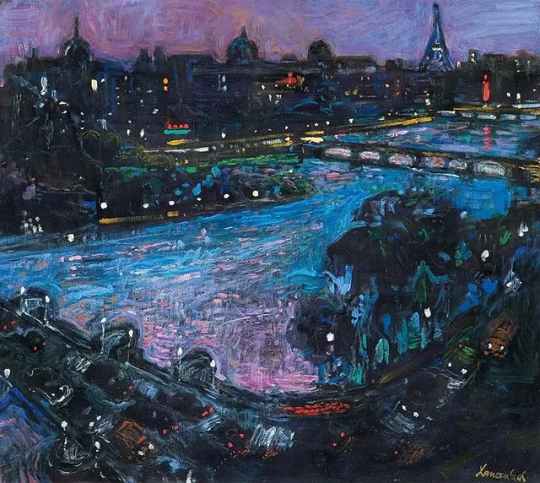
Jan Szancenbach - Night view of Paris (1997)
533 notes
·
View notes
Text
Pentiment's Complete Bibliography, with links to some hard-to-find items:
I've seen some people post screenshots of the game's bibliography, but I hadn't found a plain text version (which would be much easier to work from), so I put together a complete typed version - citation style irregularities included lol. I checked through the full list and found that only four of the forty sources can't be found easily through a search engine. One has no English translation and I'm not even close to fluent enough in German to be able to actually translate an academic article, so I can't help there. For the other three (a museum exhibit book, a master's thesis, and portions of a primary source that has not been entirely translated into English), I tracked down links to them, which are included with their entries on the list.
If you want to read one of the journal articles but can't access it due to paywalls, try out 12ft.io or the unpaywall browser extension (works on Firefox and most chromium browsers). If there's something you have interest in reading but can't track down, let me know, and I can try to help! I'm pretty good at finding things lmao
Okay, happy reading, love you bye
Beach, Alison I. Women as Scribes: Book Production and Monastic Reform in Twelfth-Century Bavaria. Cambridge Univeristy Press, 2004.
Berger, Jutta Maria. Die Geschichterder Gastfreundschaft im hochmittel alterlichen Monchtum: die Cistercienser. Akademie Verlag GmbH, 1999. [No translation found.]
Blickle, Peter. The Revolution of 1525. Translated by Thomas A. Brady, Jr. and H.C. Erik Midelfort. The Johns Hopkins University Press, 1985.
Brady, Thomas A., Jr. “Imperial Destinies: A New Biography of the Emperor Maximilian I.” The Journal of Modern History, vol 62, no. 2., 1990. pp.298-314.
Brandl, Rainer. “Art or Craft: Art and the Artist in Medieval Nuremberg.” Gothic and Renaissance Art in Nuremberg 1300-1550. The Metropolitan Museum of Art, 1986. [LINK]
Byars, Jana L., “Prostitutes and Prostitution in Late Medieval Bercelona.” Masters Theses. Western Michigan University, 1997. [LINK]
Cashion, Debra Taylor. “The Art of Nikolaus Glockendon: Imitation and Originality in the Art of Renaissance Germany.” Journal of Historians of Netherlandish Art, vol 2, no. 1-2, 2010.
de Hamel, Christopher. A History of Illuminated Manuscripts. Phaidon Press Limited, 1986.
Eco, Umberto. The Name of the Rose. Translated by William Weaver. Mariner Books, 2014.
Eco, Umberto. Baudolino. Translated by William Weaver. Mariner Books, 2003.
Fournier, Jacques. “The Inquisition Records of Jacques Fournier.” Translated by Nancy P. Stork. Jan Jose Univeristy, 2020. [LINK]
Geary, Patrick. “Humiliation of Saints.” In Saints and their cults: studies in religious sociology, folklore, and history. Edited by Stephen Wilson. Cambridge University Press, 1985. pp. 123-140
Harrington, Joel F. The Faithrul Executioner: Life and Death, Honor and Shame in the Turbulent Sixteenth Century. Farrar, Straus and Giroux, 2013.
Hertzka, Gottfired and Wighard Strehlow. Grosse Hildegard-Apotheke. Christiana-Verlag, 2017.
Hildegard von Bingen. Physica. Edited by Reiner Hildebrandt and Thomas Gloning. De Gruyter, 2010.
Julian of Norwich. Revelations of Divine Love. Translated by Barry Windeatt. Oxford Univeristy Press, 2015.
Karras, Ruth Mazo. Sexuality in Medieval Europe: Doing Unto Others. Routledge, 2017.
Kerr, Julie. Monastic Hospitality: The Benedictines in England, c.1070-c.1250. Boudell Press, 2007.
Kieckhefer, Richard. Forbidden rites: a necromancer’s manual of the fifteenth century. Sutton, 1997.
Kuemin, Beat and B. Ann Tlusty, The World of the Tavern: Public Houses in Early Modern Europe. Routledge, 2017.
Ilner, Thomas, et al. The Economy of Duerrnberg-Bei-Hallein: An Iron Age Salt-mining Center in the Austrian Alps. The Antiquaries Journal, vol 83, 2003. pp. 123-194
Lang, Benedek. Unlocked Books: Manuscripts of Learned Magic in the Medieval Libraries of Central Europe. The Pennsylvania State University Press, 2008
Lindeman, Mary. Medicine and Society in Early Modern Europe. Cambridge University Press, 2019.
Lowe, Kate. “’Representing’ Africa: Ambassadors and Princes from Christian Africa to Renaissance Italy and Portugal, 1402-1608.” Transactions of the Royal Historical Society Sixth Series, vol 17, 2007. pp. 101-128
Meyers, David. “Ritual, Confession, and Religion in Sixteenth-Century Germany.” Archiv fuer Reformationsgenshichte, vol. 89, 1998. pp. 125-143.
Murat, Zuleika. “Wall paintings through the ages: the medieval period (Italy, twelfth to fifteenth century).” Archaeological and Anthropological Sciences, vol 23, no. 191. Springer, October 2021. pp. 1-27.
Overty, Joanne Filippone. “The Cost of Doing Scribal Business: Prices of Manuscript Books in England, 1300-1483.” Book History 11, 2008. pp. 1-32.
Page, Sophie. Magic in the Cloister: Pious Motives, Illicit Interests, and Occullt Approaches to the Medieval Universe. The Pennsylvania State University Press, 2013.
Park, Katharine. “The Criminal and the Saintly Body: Autopsy and Dissectionin Renaissance Italy.” Renaissance Quarterly, vol 47, no. 1, Spring 1994. pp. 1-33.
Rebel, Hermann. Peasant Classes: The Bureaucratization of Property and Family Relations under Early Habsburg Absolutism, 1511-1636. Princeton University Press, 1983.
Rublack, Ulinka. “Pregnancy, Childbirth, and the Female Body in Early Modern Germany.” Past & Present,vol. 150, no. 1, February 1996.
Salvador, Matteo. “The Ethiopian Age of Exploration: Prester John’s Discovery of Europe, 1306-1458.” Journal of World History, vol. 21, no. 4, 2011. pp.593-627.
Sangster, Alan. “The Earliest Known Treatise on Double Entry Bookkeeping by Marino de Raphaeli.” The Accounting Historians Journal, vol. 42, no. 2, 2015. pp. 1-33.
Throop, Priscilla. Hildegarde von Bingen’s Physica: The Complete English Translation of Her Classic Work on Health and Healing. Healing Arts Press, 1998.
Usher, Abbott Payson. “The Origins of Banking: The Brimitive Bank of Deposit, 1200-1600.” The Economic History Review, vol. 4, no. 4. 1934. pp.399-428.
Waldman, Louis A. “Commissioning Art in Florence for Matthias Corvinus: The Painter and Agent Alexander Formoser and his Sons, Jacopo and Raffaello del Tedesco.” Italy and Hungary: Humanism and Art in the Early Renaissance. Edited by Peter Farbaky and Louis A. Waldman, Villa I Tatti, 2011. pp.427-501.
Wendt, Ulrich. Kultur and Jagd: ein Birschgang durch die Geschichte. G. Reimer, 1907.
Whelan, Mark. “Taxes, Wagenburgs and a Nightingale: The Imperial Abbey of Ellwangen and the Hussite Wars, 1427-1435.” The Journal of Ecclesiastical History, vol. 72, no. 4, 2021, pp.751-777.
Wiesner-Hanks, Merry E. Women and Gender in Early Modern Europe. Cambridge University Press, 2008.
Yardeni, Ada. The Book of Hebrew Script: History, Palaeography, Script Styles, Calligraphy & Design. Tyndale House Publishers, 2010.
424 notes
·
View notes
Text




STING'S FIRST AND LAST DROP FROM THE RAFTERS
WCW NITRO (jan. 20, 1997) ⇾ AEW DYNAMITE (feb. 28, 2024)
#sting#wrestlingedit#aewedit#wcwedit#aew#aew dynamite#wcw nitro#tv: dynamite#dynamite: s06e09#parallels#ours: gifs#maker: s#*
500 notes
·
View notes
Text
The Lore behind Ullriis
I'm just gonna do this one for the fun of it😊
Bjarne joined Telekom in late 1995 and notably announced that he would win the TdF the following year.
1) Nobody on the team believed he would actually be able to pull that off. Not even Jan. But he did mention in his auto-biography how Bjarne really impressed him (the word he used was 'imponieren'... multiple times.)
2) Godefroot did not include Jan in his sales pitch to Bjarne, as Jan just came off a very mediocre first season as a pro.
3) Telekom was basically on verge of fucking quitting their cycling team as Jan revealed in his new documentary 'Jan Ullrich - der Gejagte', and Bjarne basically rebuild the whole team from the ground up.
During 1996 they rode the Midi Libre together, during which pretty much everyone had something to bitch about Bjarne, but not Jan.
Aldag goes on to paint a picture of Bjarne, using his teammates like sled dogs, verbally whipping them into a seemingly gratuitous 90-km pursuit on a stage in which a breakaway group had cut loose and Telekom had nothing to gain from hunting them down.
During the Tour de Suisse 1996 Jan was supposed to be just Bjarne's domestique. However Bjarne wasn't feeling too well and grew weaker with each day, developing a pretty foul mood. And even though Jan could have gone faster he instead stayed by Bjarne's side, trying to cheer him up.
Bjarne abandoned the race after stage 6, meanwhile Rudy Pevenage, who had noticed Jan's form, approached Bjarne asking: "Did you see how good Jan is? He could give you great support on the tour."
But Bjarne was way too angry to even get into that and replied, "Just do what you want," before leaving for home.
That would kick off an internal struggle between Rudy Pevenage and Walter Godefroot, about whether or not they should take Jan to the Tour de France, that was only finally put to rest after Jan came in second in the German National Championship (in which he pretty much gifted Christian Henn the first place).
So Jan was finally placed on the team for the Tour de France 1996 and by his own admission he was the only one not in one of the 'gangs'.
The team was divided into Erik's group and Bjarne's group, and Jan was basically just told to go as fast as he could.
From the very beginning Jan pretty much clung to Bjarne for comfort and guidance. Like during stage 7 which included two scary Alpine passes and a murderous ascend to the finish Jan was understandably scared, and Bjarne managed to calm him by telling him, "You are just gonna stay by my side as long as you can."
And that's what Jan did. In the end the media would say Bjarne had been, "brilliantly assisted by the second youngest rider in the race".
During that Tour you could also watch something that would define Jan and Bjarne's relationship for the years to come.
Jens Heppner: "If Riis millimetric nitpicking over gear ratios and saddle height could drive his team mechanics to distraction, Ullrich typically issues one instruction: 'I'll have the same as Bjarne.'"
Bjarne also confirmed: "At first he was quite curious, then I think he sort of learned, 'Ach, Bjarne knows everything, Bjarne's thinking of everything, so I don't have to'. It was easy for him but also not the best thing because as a leader and as a young guy you need to learn what you want in your life. It's part of growing as an athlete."
Jan was such a great help to Bjarne that by stage 8 he had gained his trust, to the point that Bjarne would discuss the strategy of the stage to come with Jan on the day before the stage, and then with the rest of the team on the day of the stage.
For example, when Jan met up with Gaby before stage 9 he already knew Bjarne was gonna try and get the yellow jersey that day.
Or when Bjarne used Jan to set the pace during stage 16 while easily riding next to the lead group and pondering when to execute the killing blow.
Bjarne even reveals in 'Der Gejagte': "How nice could that be? To have a strong guy like him next to me. And I remember sometimes, you know, just, 'Go, Jan. Just ride as hard as you can and I will finish it off.'"
Jan throughout the whole duration of the Tour in '96 never wavered in his loyalty to Bjarne.
Not when he was briefly maillot jaune virtuel during stage 10, not when he became second overall after his amazing ride during stage 17, not after winning the last ITT on stage 20.
It all raised the question of how much more road Jan would have needed to close the gap to Bjarne.
Between the two of them there doesn't really seem to have been any thought of Jan possibly contesting the GC. After the last ITT the two of them hugged as the pressure of the last weeks had finally been taken off their shoulders. And Jan seemed almost embarrassed to the press, telling them that he didn't want the yellow jersey and that he didn't even thought about it.
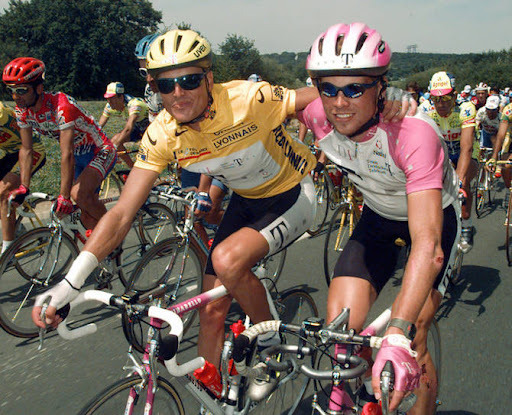
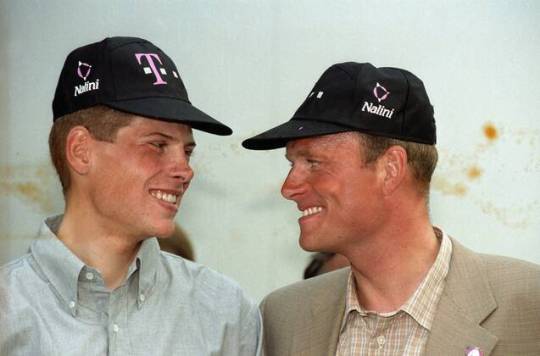
After the Tour finished the team went out for something to eat where Bjarne went on to thank each member of the team individually, while also apologizing for pushing them so hard.
Jan he told: "Jan, you were my best helper. I thank you for that. What you gave me I will give back to you someday."
The Tour de France 1997 had them both working together again, and the team started out in the same team constellation: Bjarne as team captain and Jan as his domestique.
Even though Bjarne betrayed some anxiety at his pre-race press conference in Rouen, admitting he didn't know how Jan felt 'deep down' about the established order in the team.
Jan for his part continued to profess his loyalty, much to some teammates bemusement. After Jan's second place during the prologue time trial Jens Heppner whispered to Udo Bölts that Riis would have no chance if Jan was ever set free.
In fact, the whole team stood united behind Jan, which became clear as early on as stage 1.
During the first Pyrenean stage (9) Bjarne couldn't life with the pace set by Virenque, and Jan immediately fastened himself to Virenque's rear wheel in the hope that Bjarne would recover; which he couldn't and didn't.
Pretty much everyone knew at this point the man with the best chance to get his grabby lil raccoon hands on the yellow jersey on Telekom was Jan.
I mean, look at those gifs, and tell me Bjarne, despite being thankful for what Jan did during this stage, didn't know perfectly well that it was Jan's time now.
(Jan also revealed in the Kroos podcast how Bjarne noticed on the first mountain stages: "Jan is loyal, he is waiting for me but he could also go faster too.")
That night Walter Godefroot assured the press the Telekom hierarchy and strategy hadn't changed, meanwhile telling the riders something different. Jan would no longer have to sacrifice himself for Bjarne.
And we all know what happened on stage 10, on the road to Andorra.
After Godefroot told Jan to go, after Bjarne finally told Jan, "Listen, today, if you can, give everything that you've got," Jan went ahead and stormed Andorra.
Jan also revealed in the Kroos podcast how Bjarne had found him after the stage and hugged him with the biggest smile, happy that had Jan managed to pull this off.
He also acknowledged that his and Bjarne's relationship wasn't quite normal. That there are way more team captains that will call back a domestique that's doing better, not wanting to give up the leader position.
But Bjarne was so thankful for what Jan did for him in 1996, and how loyal Jan stayed to him up until Bjarne gave him the go-ahead in Andorra that he allowed for this changing of the guard.
Actually Bjarne is quoted saying how fair Jan was toward him and that he in turn needs to be fair to him.
During stage 14 for example, where Jan misjudged a corner during the descend, Bjarne jumped in to help Jan get back to the leaders, riding for him the way Jan had done for him just a year ago.
Bjarne overall endured a miserable Tour (as he was suffering the flu) but still made good of his promise to repay the favours of the previous year. In fact, he was one of the first to embrace Jan when he crossed the finish line in Paris.
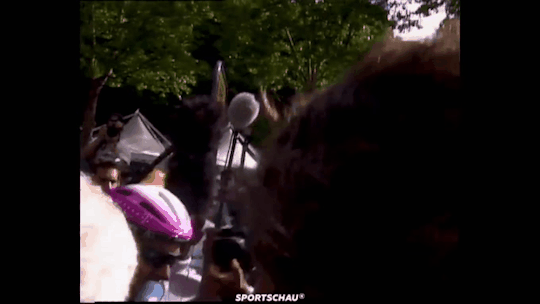


During the 1998 Tour de France you would see just how much Jan relied on Bjarne as his teammate.
Pantani was able to best Jan during stage 15 because of many reasons, one of them because of what Bjarne had told Jan on the morning of the stage: "The Galibier was too far from the finish, so we shouldn't try to cover any attacks there: he or Udo Bölts would do it if necessary," Pevenage explains. "So we get halfway up the Galibier, Pantani attacks, and Jan doesn't follow. Why? because Bjarne said in the morning he shouldn't panic."
However when Marco started his attack Bölts and Riis had already been dropped.
The two of them would spend the remainder of the stage flanking Jan as the trio made their way up the mountain.
(start at timestamp 1:20:00 and watch Jan come up to the finish with Udo and Bjarne)
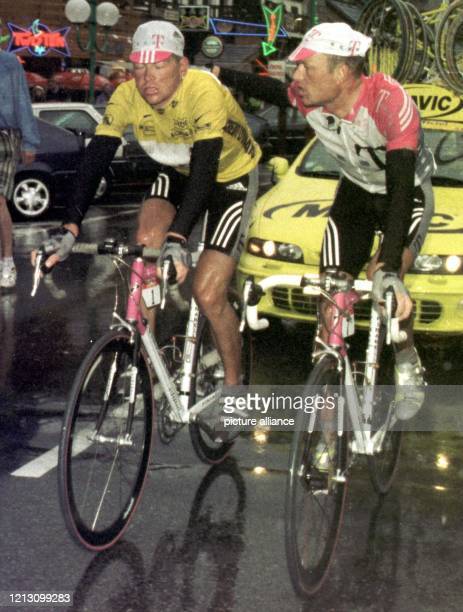

Look at how Bjarne has his arm around Jan's shoulder after they finally made it over the finish line, and contrast that to how Bjarne basically was such a dick to the rest of the team NOBODY on Telekom has something good to say about him BUT Jan.
You can also see how Jan relied on Bjarne's guidance during both strikes of the peloton.

Now let's talk about the probably most damning piece of Ullriis evidence.
The fact that Jan watched Lance's 'comeback of a century' during the TdF 1999 from afar, as he spend holidays with Tobias Steinhauser and stayed a few days with Bjarne in Tuscany.
At that time Jan was seriously considering retiring from bike racing as the whole pressure of his fame was getting to him, according to Christian Henn making him unable to clear his head, and after an injury during the Deutschland Tour left him with an injured meniscus and unable to ride the Tour.
Riis said during their time spend together that Jan was crazy for considering retirement, and despite Jan having inched toward that conclusion as well it was only after his time spend in Tuscany that he informed Walter Godefroot that he intended to ride on, during a meeting in Brussels in August.
Bjarne finished his active career after 1999 and went on to become a manager for some cycling teams like the danish cycling team home-Jack&Jones.
Meanwhile Jan would stay with Telekom until he got kicked from the team in 2002 after a positive doping test.
Afterwards he would end up in talks with Bjarne about possibly joining his Coast team. For a time Pantani was even in talks to join too.

However their negotiations ultimately didn't come to fruition.
Riis: "I said, 'Jan, I'm going to take you if you want, but it's going to be on my terms.' Because I knew that's what he needed - to change his environment. That was my demand, but in the end he couldn't agree to it. The weight was only part of the problem. If you put the whole focus on that, you make it a bigger problem than it is. I was going to change the whole foundation of what he was doing, how he was thinking. But he wasn't able to do that. He knew I could help him, he knew he maybe needed me, but to do it a hundred per cent? He didn't want to take that step."
They would also meet in 2003 when the Tour de France celebrated its 100 anniversary.

In Jan's new Amazon Prime documentary 'Jan Ullrich - Der Gejagte' Bjarne was also interviewed.
For one, that says something because he wasn't included in the ARD organized documentary 'Being Jan Ullrich', which might be because of misgivings about Bjarne's doping past, but then again Udo Bölts and Rolf Aldag were also interviewed.
Jan himself revealed how some of the guys interviewed for his project he asked before ARD asked about theirs.
Either ARD didn't want to talk to Bjarne, or they couldn't because Bjarne had already agreed to be on Jan's docu.
Whatever the case Bjarne said: "We know what I did, we know what Jan did in the 90s. So, if you take that time, you know, did we do whatever it takes to win? I don't think so but we went far. And we, I believe... I can speak for myself but I also think Jan can say the same thing. We did what was necessary at that time.
Does that mean we do whatever we wanna do to win? And put everything else on the side? No. Our health, our family? No, we didn't think like that. But we knew we were in a period of time that... you did certain things and that (doping) was a part of it."
Bjarne also acknowledges: "I never saw Jan as a leader. As a leader who stands up for his team and, you know, takes control, takes leadership. Jan wasn't that."
Bjarne always knew about this predisposition of Jan's. He knew Jan needed help because they were so very different; and he decided to help Jan, be there for him, maybe take the pressure off a little.
Like Jan said in the Kroos podcast, his and Bjarne's relationship was something special.
It's not as normal for the team leader to let his domestique go because he notices he's doing better. But Bjarne was so amazed with how Jan rode for him in '96, how loyal he was until Arcalis 1997, until he gave him the literal 'go-ahead' that he decided to be Jan's defacto co-captain.
You have news outlets referring to Jan and Bjarne as a duality like General and Lieutenant, King and Crown Prince.
You have Bjarne tell Daniel Friebe in 2020 that he would like to retain one thing: that he and Jan Ullrich could not have realized their dreams without each other.
It's clear as day that Bjarne played a very special role in Jan's career as a cyclist during the 90s.
Jan may not have stayed in as close contact to Bjarne, as he maybe did to Lance but Jan revealed how he and Bjarne are still very good friends to this day and how they are still in contact.
#ullriis#jan ullrich#bjarne riis#cycling stuff#cycling#cycling history lessons#tour de france 1996#tour de france 1997#tour de france 1998#midi libre 1996#tour de suisse 1996
4 notes
·
View notes
Text
On this Yom Ha'Zikaron Le'Chalalei Ma'rachot Yisrael (Memorial Day for Israel's Fallen Soldiers and Terror Victims), I figured it's important to remember that Israeli victims did not exist solely on Oct 7. We have lost loved ones before and since. Here's a list with just one random victim to represent each year. Please scroll down the list to see how far back it goes.
(part 1/5, all parts in the reblogs)
2024: On Jan 7, we lost 19 years old Shai Garmai

2023: On Oct 7, we lost 28 years old Osama abu Madiam

2022: On Nov 23, we lost 18 years old Tiran Faro
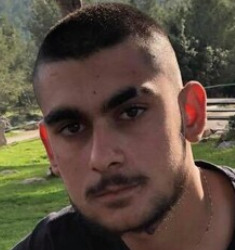
2021: On May 12, we lost 5 years old Ido Avigal

2020: On Aug 26, we lost 39 years old Shai Ochayon
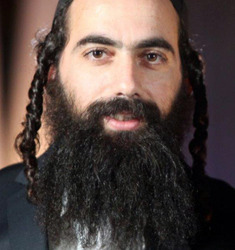
2019: On May 5, we lost 49 years old Zaid al-Chamamda

2018: On Dec 12, we lost Amiad Israel Yish Ran, who was murdered in his mother's womb

2017: On Nov 22, we lost 21 years old Hodaya Nechama Assoulin

2016: On Oct 25, we lost 14 years old Rami Namer abu Amar

2015: On Feb 17, we lost 4 years old Adelle Biton

2014: On Oct 22, we lost 2.5 months old Chaya Zissel Brown
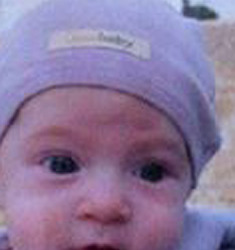
2013: On Dec 24, we lost 22 years old Salech al-Din abu al-Atayef

2012: On Jul 18, we lost 28 years old Yitzchak Idan Kolangi

2011: On Apr 17, we lost 16 years old Daniel Aryeh Viplich

2010: On Feb 26, we lost 52 years old Netta Blatt Sorek

2009: On Apr 2, we lost 13 years old Shlomo Nativ

2008: On Mar 6, we lost 26 years old Doron Trunach Mahareta

2007: On Jun 17, we lost 85 years old Meir Cohen
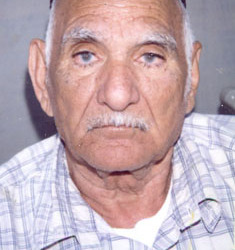
2006: On Aug 10, we lost 4 years old Fatchi Assdi
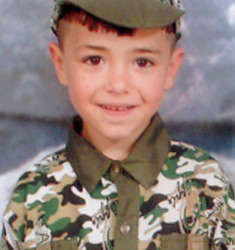
2005: On Jul 12, we lost 16 years old Nofar Horvitz

2004: On Sep 29, we lost 2 years old Dorit Massarat Binsan

2003: On Sep 9, we lost 20 years old Naava Appelbom
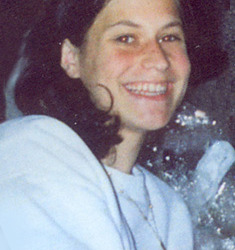
2002: On Nov 10, we lost 4 years old Noam Levi Ochayon

2001: On Dec 12, we lost 42 years old Ester Avraham

2000: On Nov 21, we lost 19 years old Itamar Yefet

1999: On Jun 24, we lost 34 years old Tony Eliyahu Zanna
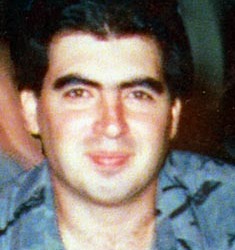
1998: On Dec 2, we lost 41 years old Osama Moussa abu Aisha
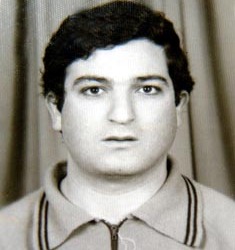
1997: On Mar 13, we lost 13 years old Natali Alkalai
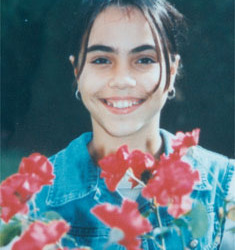
1996: On Feb 25, we lost 57 years old Yitzchak Elbaz
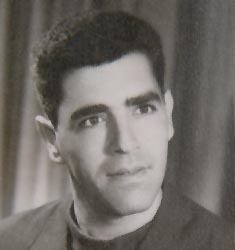
1995: On Jul 24, we lost 60 years old Zehava Oren

As Tumblr limits a post to 30 images... part 1/5 - the next parts will be posted in the reblogs momentarily. Please check out the full list.
(for all of my updates and ask replies regarding Israel, click here)
#israel#antisemitism#israeli#israel news#israel under attack#israel under fire#terrorism#anti terrorism#hamas#antisemitic#antisemites#jews#jew#judaism#jumblr#frumblr#jewish#israelunderattack
273 notes
·
View notes
Text

Space Shuttle Discovery launches off the pad during STS-85. August 7, 1997.
The prime payload of STS-85 was the Cyrogenic Infrared Spectrometers and Telescopes for the Atmosphere Shuttle Pallet Satellite 2 (CRISTA-SPAS-2), which had flown previously on STS-66 in 1994. CRISTA-SPAS-2 was deployed from Discovery's payload bay and measured trace gasses and the dynamics of Earth's middle atmosphere with its three telescopes and four spectrometers. The satellite was recovered by Discovery following a 9 day free-flight.

CHRISTA-SPAS-2 during its 9th and final day of free-flight, prior to capture by Discovery's Remote Manipulator Arm.
Additional payloads included the Manipulator Flight Demonstration sponsored by NASDA, the Japanese Space Agency (later known as JAXA). The demonstration tested a newly designed robotic arm that would later be installed on the Japanese Kibo module of the International Space Station.

The sun sets on day 8 of STS-85.

STS-85 crew on orbit. Top row, from left: Payload Specialist Bjarni Tryggvason (CSA), Mission Specialist Stephen Robinson, Mission Commander Curtis Brown.
Bottom row, from left: Mission Specialist Robert Curbeam, Jr., Payload Commander N. Jan Davis, Pilot Kent Rominger.
Landing was originally schedule for August 18, but ground fog at the Kennedy Space Center pushed the landing date to August 19.

Discovery returns to Earth, successfully completing the 12-day STS-85 mission.
NASA 1, 2, 3, 4, 5
121 notes
·
View notes